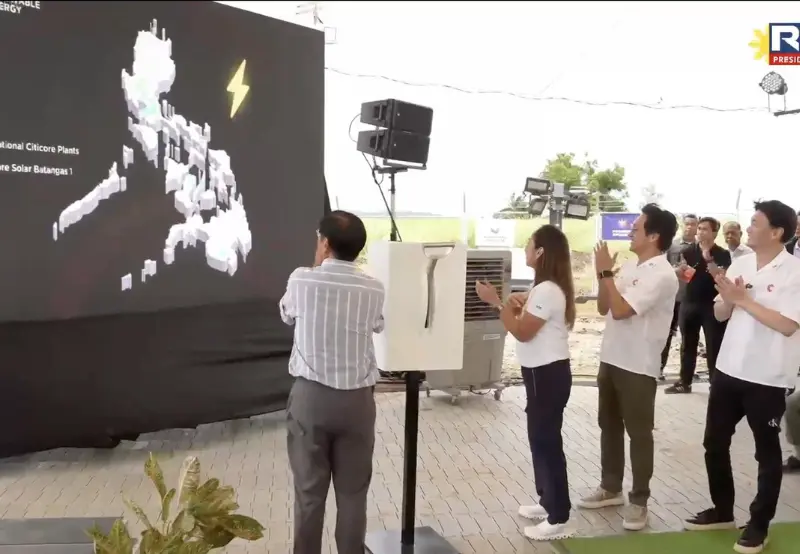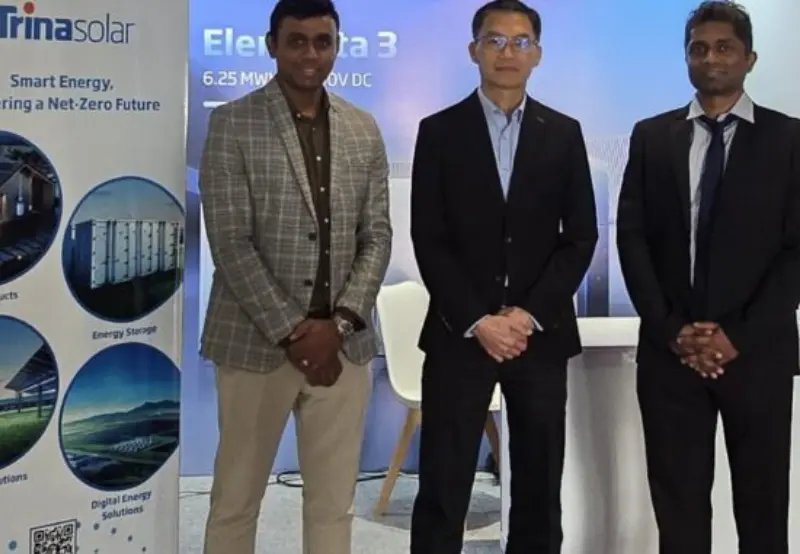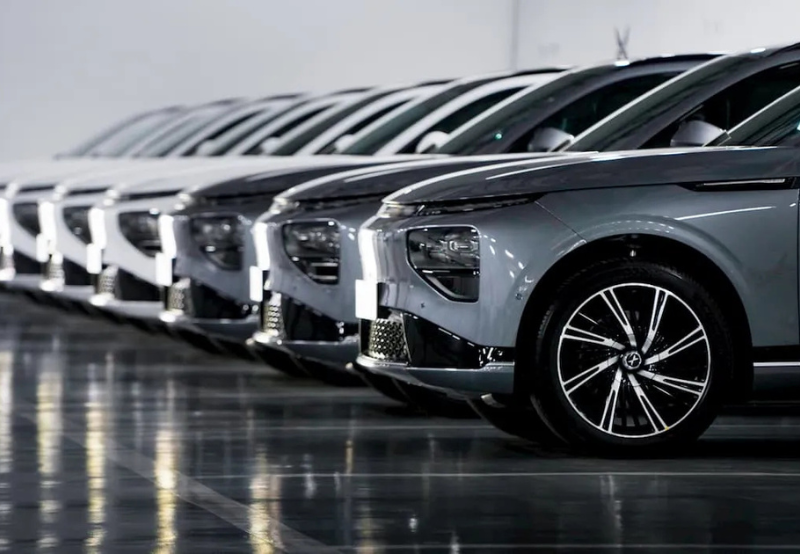Citicore launches Philippines first solar baseload plant in Batangas with 197 MWp solar + 320 MWh battery storage. A milestone for clean, reliable energy and food security.
Table of Contents
- Introduction: Why the Philippines First Solar Baseload Plant Matters
- What is “Baseload Solar” and How It Works
- The Batangas 1 Project: Key Details
- Agrivoltaics and Local Benefits
- Policy and Clean Energy Ambitions
- Environmental and Economic Impacts
- Challenges & What Comes Next
- Conclusion: A New Era for Renewable Power
1. Introduction: Why the Philippines First Solar Baseload Plant Matters
Philippines First Solar Baseload Plant marks a major landmark in the nation’s shift to reliable clean energy. On 15 September 2025, President Ferdinand R. Marcos Jr inaugurated Citicore Solar Batangas 1 (CS Batangas 1) in Tuy, Batangas — a solar farm paired with large-scale battery storage that can generate clean power beyond daylight hours.
This facility shows that solar energy, when combined with proper storage, can function more like conventional baseload power — supplying electricity continuously, even when the sun isn’t shining. That’s vital for the Philippines, which has grappled with energy reliability, import-dependency for fossil fuels, and climate vulnerability.
2. What is “Baseload Solar” and How It Works
In power systems, “baseload” refers to electricity supply that is stable, predictable, and available 24/7 — traditionally delivered by coal, nuclear, or geothermal plants. Solar power alone fluctuates with day/night cycles and weather, but when paired with battery storage, excess energy generated during the day can be stored and then dispatched during evenings or periods of low solar output.
CS Batangas 1 achieves this by combining solar panels (197 MW-peak) with a battery energy storage system (BESS) of 320 MWh, enabling it to supply energy beyond daylight and handle peak demand periods.
3. The Batangas 1 Project: Key Details
Some of the most important parts of the Philippines First Solar Baseload Plant include:
- Capacity: 197 MWp solar generation plus 320 MWh of battery storage.
- Location: Barangays Lumbangan and Luntal, in the town of Tuy, Batangas.
- Power reach: The plant can supply electricity to about 158,000 households.
- Emission reduction: Approximate reduction of 265,000 tons of CO₂ annually.
4. Agrivoltaics and Local Benefits
One standout feature of Batangas 1 is its use of agrivoltaics — planting crops beneath and around solar panels. This approach helps:
- Use land efficiently by combining energy production with agriculture.
- Provide farmers with additional income streams.
- Enhance food security by letting land remain productive for farming even with solar installations.
5. Policy and Clean Energy Ambitions
The plant aligns with national goals:
- The Philippines is targeting 35% renewables in its energy mix by 2030, and 50% by 2040.
- CREC (Citicore Renewable Energy Corporation) has a pipeline of projects aiming for 1 gigawatt of renewable capacity by early 2026.
- Many of CREC’s projects (nine of eleven) have secured 20-year government offtake agreements through the Green Energy Auction Program.
This initiative also demonstrates how public policy and private sector investment can collaborate to deliver more reliable and sustainable power.
6. Environmental and Economic Impacts
Here are some of the direct benefits of the Philippines First Solar Baseload Plant:
Environmental:
- Significant carbon emissions reduction (≈ 265,000 tonnes annually) compared to fossil fuel alternatives.
- Less reliance on imported fuel for power, which reduces pollution and greenhouse gas emissions tied to transport.
- Supports more resilient, climate-friendly infrastructure.
Economic:
- Reliable power supply improves energy security, reduces outages, and stabilises electricity costs.
- Job creation during construction and ongoing operations.
- Potential for more investments as this sets a benchmark for baseload-capable solar projects.
7. Challenges & What Comes Next
While the project is ambitious, there are challenges to scaling and replicating such plants:
- Cost and financing: Battery storage adds considerable cost; securing long-term financing or subsidies may be required.
- Grid integration: Ensuring that distribution networks and grid management are robust enough to handle intermittent supply and storage dispatch.
- Land and permits: Sites must be appropriately chosen, with regulatory support, environmental impact assessments, and community buy-in.
- Maintenance and technology: Proper upkeep of both solar panels and battery systems, and ensuring life cycles and safety.
What’s next? CREC has more projects in its pipeline across Batangas, Pangasinan, Pampanga, Quezon, and Negros Occidental. By end-2025, these will add more storage and generation capacity.
8. Conclusion: A New Era for Renewable Power
The launch of the Philippines First Solar Baseload Plant (Batangas 1) is more than a technical milestone—it represents a shift in how renewables can be integrated to offer reliable, around-the-clock power in tropical nations.
With that kind of infrastructure, the Philippines moves towards:
- Stronger energy independence
- Lower emissions
- More rural and agricultural synergy (via agrivoltaics)
- Greater resilience in the face of climate and supply chain challenges
Projects like Batangas 1 provide a blueprint for nations seeking cleaner, more stable, and equitable power systems. The future of renewable energy doesn’t have to wait for perfect weather—it can power homes, farms, and lives even after sunset.
Read: Europe’s Pumped Storage Hydropower: 7 Powerful Reasons It’s the Backbone of Renewable Energy






